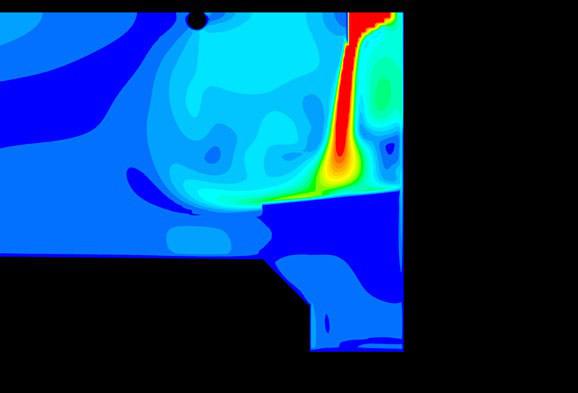Wastewater-to-Energy: The F. Wayne Hill Water Resources Center
The Gwinnett County (GA) Department of Water Resources, recognizing the energy resource that wastewater represents, recently completed construction of Gas-to-Energy and Fats, Oils, and Grease/High-Strength Waste Receiving Facilities that will reduce energy costs as much as 40% at the F. Wayne Hill Water Resources Center.
Related Topics:

The F. Wayne Hill Water Resources Center (FWHWRC) is a highly-advanced wastewater treatment facility located in Gwinnett County, Georgia, with a design capacity of 60 million gallons per day. The treatment facility includes both primary and secondary treatment unit processes that generate residuals that are anaerobically digested and dewatered. Additional liquid train treatment processes include advanced membrane filtration facilities that produce a very high-quality effluent, which is returned to Lake Sydney Lanier, a major recreational and water supply source for Metro Atlanta.
Optimizing for Energy Recovery
Long committed to sustainability, Gwinnett County explored the economic feasibility of utilizing digester gas in a combined heat and power (CHP) system as a means of decreasing operational costs. A CHP system captures the energy potential in the digester gas and converts it to both electrical power and thermal energy. The electrical power offsets current usage at the facility; thermal energy is utilized to heat the digesters.
After securing $5M in funding through the American Recovery and Reinvestment Act (ARRA), Gwinnett County competitively bid and selected the design/build team of Hazen and Sawyer and Crowder Construction Company to design and construct the CHP system.

The engine-generator is sized to operate in a “peak cycling” mode (operating the generator during peak electricity rate periods) or continuously on a blend of digester gas and natural gas to provide more constant electrical and heat generation. In either operating condition, the engine and exhaust heat recovery systems are tied into the digester hot-water loop to transfer heat to the existing anaerobic digesters. Since the engine generator started operation in August 2011, Gwinnett County realized a savings of over $1,000 per day and used the engine to offset real-time peak power costs as high as $0.75/kWh. Recovered heat more than meets the demand of the digester process.
To more fully utilize the CHP system, Gwinnett County selected the design/build team of Hazen and Sawyer and Crowder Construction Company to design and construct a Fats, Oils, and Grease (FOG) and High Strength Waste (HSW) Receiving Station. The FOG/HSW facility will inject waste streams rich in readily-digestible volatile solids directly into the anaerobic digesters, increasing gas production.

The receiving facility consists of transfer pumping, storage tanks, heating systems, and conveyance facilities. The FOG/HSW project was funded by a $3.5 million U.S. Department of Energy grant through the ARRA. The construction of the receiving facility is complete and Gwinnett County is currently evaluating potential FOG and HSW suppliers.
Design of the receiving station was a collaborative effort with plant staff to maximize the system’s storage capacity and flexibility. Existing facilities were repurposed to the extent possible to reduce construction costs. For example, several hose pumps are reused from the existing treatment facility to provide unloading and digester feed capabilities.
The receiving facility is designed with a hot water washdown system utilizing an in-line hot water heater tank. Other features include a grinder with integral rock trap, glass-lined ductile iron piping, duty and standby piping to the anaerobic digesters, ability to heat the FOG/HSW facilities to 43oC (110oF) in one day using recovered heat from the CHP system, and a bioscrubber system for controlling odors.


Maximizing Return on Investment
In an effort to maximize return on investment, Gwinnett County and Hazen and Sawyer teamed with Dr. Spyros Pavlostathis, a professor at Georgia Institute of Technology, to characterize and evaluate the digester gas production capacity of potential external FOG/HSW streams through bench-scale digestibility studies.
The studies identified volatile solids destruction, dewaterability, and supernatant nutrient concentrations of food processing dissolved air floatation (DAF) skimmings, poultry processing DAF skimmings, restaurant grease trap waste, and chewing gum waste, to quantify the potential increase in digester gas production per unit volume of digester space taken. The studies also identified any negative impacts of accepting the waste stream, such as toxicity to digesters, nutrient loadings in recycle streams, and decrease in dewatered solids concentration.
These two projects combine to dramatically reduce plant electricity expenditures and add revenue in the form of tipping fees, providing the facility and the County with a buffer against volatility in the price of energy over time. Hazen and Sawyer is currently designing additional projects that will add to the facility’s energy self-sufficiency and create new revenue streams, further establishing the F. Wayne Hill Water Resources Center as a leader in sustainable treatment plant technology.










